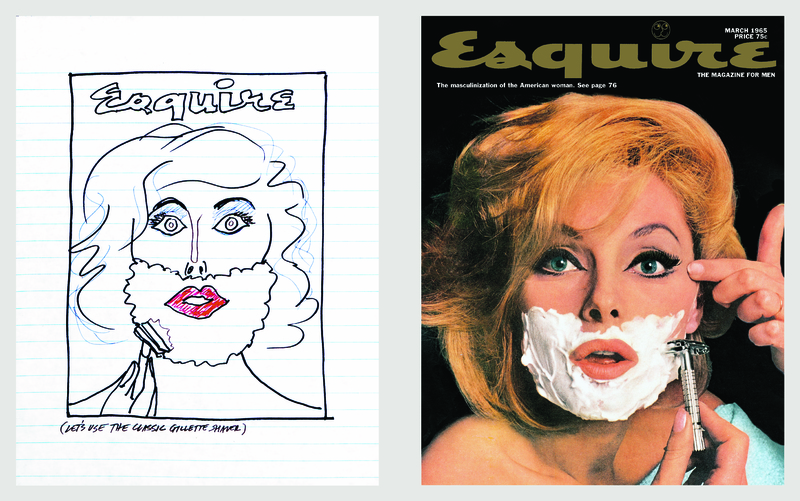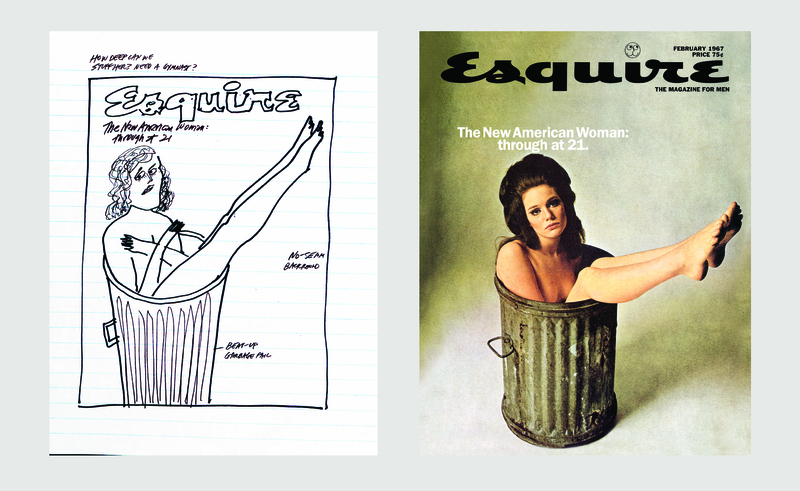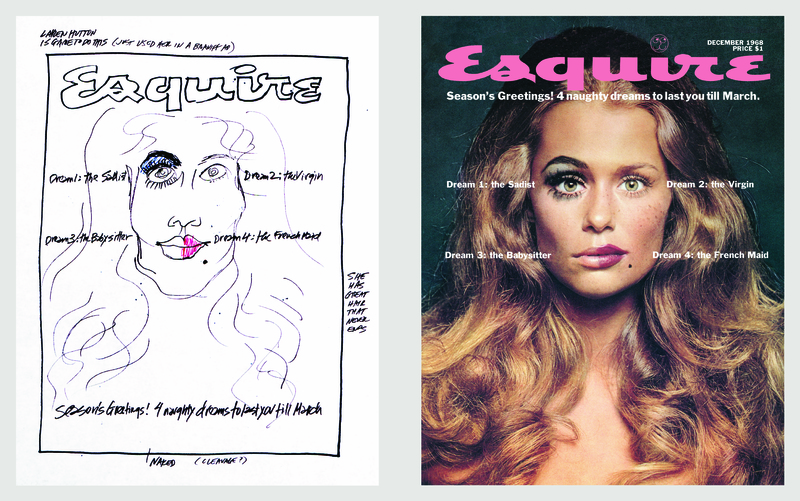FEMINISM
Published in the spring of 1965—one year before the National Organization for Women was founded—this cover accompanied an opinion piece by Helen Lawrenson on the disturbing masculinization of women’s fashion. Despite its literary aspirations, Esquire remained a men’s magazine, employing only a handful of female writers and staffers, many of whom, like Lawrenson, approached the burgeoning women’s movement with a conservative skepticism. Unsurprisingly, Lois’s covers adopted a different approach. Here Lois mocks Lawrenson’s assertions that the proliferation of women’s trousers would prove “anti-sex,” by capturing Verna Lisi, the bombshell Italian actress, mid-shave. With perfectly coiffed hair, femme fatale eyes, and sensuously parted lips, Lisi is unmistakably sexy; under Lois’s direction the embarrassingly manly act of shaving one’s face is reimagined as a seductive strip tease.
Beyond deferring to its male readership, Esquire’s lackluster approach to covering women’s issues was dictated largely by its conservative advertising block. The magazine was mainly funded through ads for major tobacco, alcohol and car companies—constituents that preferred “cheesecake” shots of beautiful women over Lois’s typically controversial covers. Bowing to financial pressures, editor Harold Hayes, the son of a Southern Baptist preacher, was forced to ask Lois for more sex appeal. In response Lois devised this impertinent pinup of a seductively pretty young woman thrown out like yesterday’s garbage. The woman’s flawless makeup and porcelain skin stand in stark contrast to the rusty, dented can she is stuffed into, while the dirty soles of her feet nod to her low economic and sexual status, a trope pioneered by the Baroque painter Caravaggio.
1968 was a year of cataclysmic change in American history, marked by assassinations, student protests, race riots and countless other tumultuous events. Recognizing they wouldn’t have “time to fool around with girl stories” during such “busy and perilous days,” the Esquire editors published a pinup photo shoot with supermodel Lauren Hutton to tide readers over until the news cycle died down. Intending to represent all four major male fantasies, as apparently determined by sociological studies, the spread depicted Hutton as virgin, French maid, sadist and babysitter. Exposing the lunacy behind the belief that one woman could or should represent such cardinally oppositional roles, Lois devised a cover where each quarter of the model’s face was made up to adhere to a different sexual stereotype. The resulting image twisted Hutton’s legendarily beautiful visage into a grotesque abstraction akin to a Picasso painting, effectively demonstrating the impossible standards imposed on modern American women.
By the start of the 1970s the women’s movement had officially become a topic of national conversation and Esquire was forced to address it head on. Though they had published work by female writers like Susan Sontag, Nora Ephron and Joyce Carol Oates in the past, Germaine Greer’s fiery opinion piece in the September 1971 issue was one of the first Esquire essays crafted explicitly from a feminist perspective. Earlier that year Greer and other prominent women’s liberationists joined Norman Mailer—famous writer, frequent contributor to Esquire and author of the misogynistic essay “The Prisoner of Sex”—in a contentious public debate. Greer’s September article was a challenge to Mailer’s chauvinist behavior issued on his home court: the pages of Esquire. A self-proclaimed “cultural provocateur,” Lois parodied the gender roles of the core of their debate, portraying Mailer as the bestial King Kong and Greer as the docile damsel in distress.



